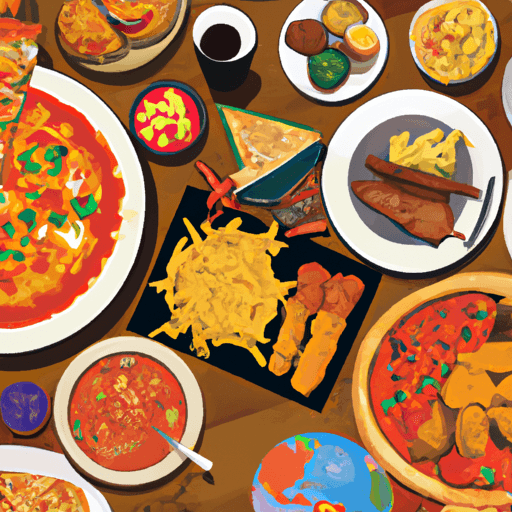Comfort Foods Across Different Countries: A Cultural and Evolutionary Analysis
Across the world, comfort foods play a significant role in shaping a nation's cultural heritage, forging a strong emotional connection with the people. The evolution and cultural significance of these foods stem from a variety of factors including local resources, regional history, cultural tradition, and parental influence.
The Evolution of Comfort Foods: Influencing Factors
Individual nations develop their own comfort foods based on available local resources and cultural traditions. Ancient civilizations partnered their survival skills with creativity to produce dishes from local produce, which over generations became favorites and part of familial and cultural rituals. Parental influence also plays a significant role in sustaining comfort food traditions as recipes are passed down from generation to generation.
Exploring Specific Examples of Comfort Foods Across Different Countries
Italy: Pizza
Born in Naples, Pizza is one of the prominent comfort foods worldwide. Originally a meal for poor people, crafted from local resources like wheat flour, olive oil, lard, cheese, and tomatoes, Pizza's global proliferation links back to immigration and the universal appreciation of its taste.
USA: Macaroni and Cheese
A staple in American households, Macaroni, and Cheese traces its origins back to the dawn of American history where affordable and simple ingredients like pasta and cheese played pivotal roles in diet staples.
China: Congee
Congee, a rice porridge dish, is a widely-cherished comfort food in China. The simplicity of its ingredients—rice and water—and the flexibility to add more elements based on preference made it popular. It's a symbol of sustenance and warmth in the Chinese culture.
The Impact of Immigration and Globalization on Comfort Foods
Immigration and globalization have played a significant role in spreading comfort foods beyond their countries of origin. As people migrate, they take along their culinary traditions, which subsequently blend with the local culture and create a new variant of the comfort food. Pizza's global reach underlines such influence.
Homogenization and Adaptation of Comfort Foods in Foreign Cultures
As the world becomes more interconnected through travel and technology, comfort foods are no longer confined to their native lands. In many cases, these foods have been adapted to suit the local palate, leading to a fascinating mix of flavors and techniques. For instance, American Tex-Mex cuisine has its roots in Mexican comfort food but was adapted to appeal to American tastes.
Conclusion
Comfort foods are a cultural passport, offering a taste of a country's history, tradition and people's way of life. While these foods evolve over time under various influences, they still retain their core essence, satisfying not just the hunger but also serving as a reminder of home and comfort.


















Comments
Leave a Comment